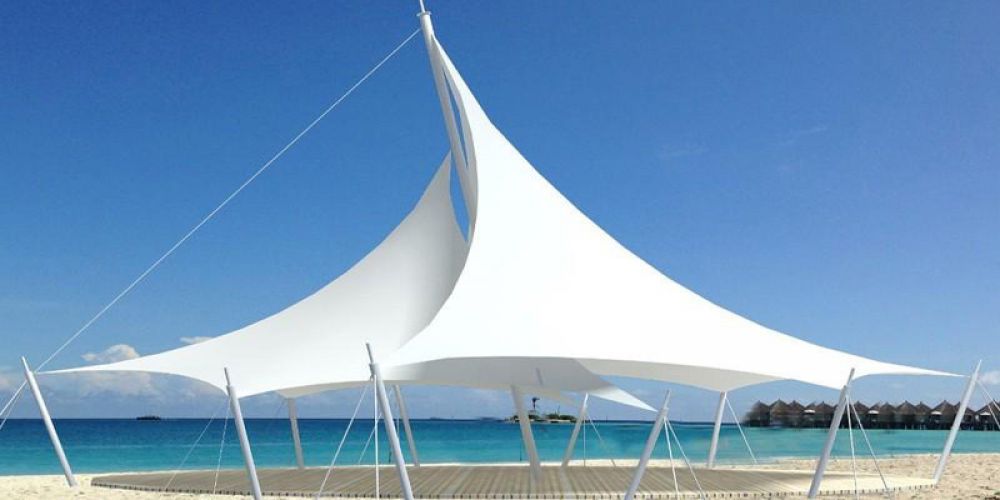
The woven glass fibre yarns give PTFE membrane its superior mechanical strength. It can span significant distances with minimal secondary supporting elements, making it the material of choice for large lightweight structures.
Being chemically inert, the PTFE coating does not degrade or age under UV exposure, ensuring the fabric maintains its bright white colour throughout its lifespan.
PTFE fabric can be installed in climates ranging from the frigid arctic to the scorching desert heat, capable of maintaining strength and flexibility in temperatures from -73°C to +232°C.
The glass fibre filaments, known as beta glass, are the smallest diameter available in tensile membrane fabrication, and provide the membrane with maximum flexibility.
The fibers are drawn from hot melt glass through platinum dies into continuous filaments, and are then twisted and plied into yarn bundles. The yarns are woven into a wide structural fabric, which is then coated with PTFE to complete the process. Under normal conditions, the fabric behaves elastically and does not undergo significant stress relaxation or creep.
PTFE membranes transmit up to 14% of natural light, reducing the need for artificial lighting throughout the day and creating a natural colour-correct and glare-free environment.
This same property allows for creative visual effects with great impact when backlit at night, while strong reflectivity allows for even under-canopy luminance though uplighting.
PTFE reflects much of the sun’s energy, keeping the air temperature under a PTFE membrane roof much cooler than conventional roofing materials.
When inistalled in inner-city areas, these reflective characteristics help to reduce the Urban Heat Island effect.
In a recent study, researchers found that on a 35ºC day, the under-surface of a PTFE membrane roof was up to 9ºC cooler than a metal roof. This translates in approx. 20% less radiant heat making the overall air temperature under a membrane roof more comfortable.
Reduced shade lines and true colour perception due to its high translucency offer a glare-free, natural-light feel for people inside a structure.
With noncombustible glass fibre at its core, the PTFE coating on architectural fabrics maintains a very high melting point (around 327°C), there are very few situations where PTFE would be damaged by heat.
In a fire situation, the membrane does not present burning or flaming droplets and will not contribute to flame propagation.
The air permeability and flexibility of the PTFE Membrane helps to absorb sounds waves rather than reflecting them back into the area below the canopy.
The same properties also mean external noise and reverberation will be reduced and filtered, aiding the acoustics of the building and its surroundings.